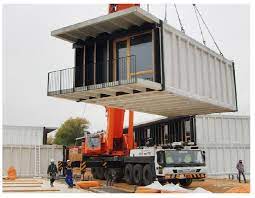The Trend of Real Estate Investment in Cultural and Historic Properties

Real estate investment in cultural and historic properties has been on the rise in recent years, with many investors recognizing the value of these unique assets. These properties, which include everything from centuries-old buildings to iconic landmarks, offer investors the opportunity to own a piece of history while also generating income.
One reason for the growing interest in cultural and historic properties is the rise of cultural tourism. More and more people are seeking authentic experiences when they travel, and historic and cultural sites offer just that. This has led to an increase in demand for properties that are steeped in history and culture, and investors are taking notice.
In addition to the tourism industry, many governments and organizations are also investing in cultural and historic properties as a way to preserve their cultural heritage. This can lead to tax breaks and other incentives for investors who are willing to take on the challenge of preserving and maintaining these unique properties.
However, investing in cultural and historic properties does come with its own set of challenges. These properties often require significant renovations and upkeep, and there are often strict regulations in place to ensure their preservation. Investors must also be willing to take a long-term view of their investment, as the value of these properties may not appreciate as quickly as other types of real estate.
Despite these challenges, the trend of real estate investment in cultural and historic properties is likely to continue in the years to come. As people continue to value authentic experiences and cultural heritage, these properties will remain in high demand, and investors who are willing to take on the challenge will have the opportunity to own a piece of history.
Another factor driving the trend of real estate investment in cultural and historic properties is the potential for unique and memorable branding opportunities. Owning a historic property or landmark can provide a business with a distinctive and recognizable identity that sets it apart from competitors. This can be particularly valuable in industries such as hospitality, where guests are seeking unique experiences that they can’t find elsewhere.
In addition to branding, cultural and historic properties can also offer opportunities for creative adaptive reuse. Rather than tearing down an old building, investors can transform it into something new and exciting that still preserves its historic character. For example, an old factory could be converted into a trendy loft apartment complex or a historic train station could be turned into a bustling market or restaurant space.
Investing in cultural and historic properties can also be a way to contribute to the preservation of cultural heritage. By investing in and maintaining these properties, investors are helping to ensure that they will continue to be enjoyed and appreciated by future generations. This can be a rewarding and fulfilling aspect of investing in cultural and historic properties, beyond just the financial returns.
Overall, the trend of real estate investment in cultural and historic properties is likely to continue as more investors recognize the value and potential of these unique assets. Whether for their potential as tourism destinations, branding opportunities, adaptive reuse possibilities, or cultural preservation, these properties offer a one-of-a-kind investment opportunity for those willing to take on the challenge.



